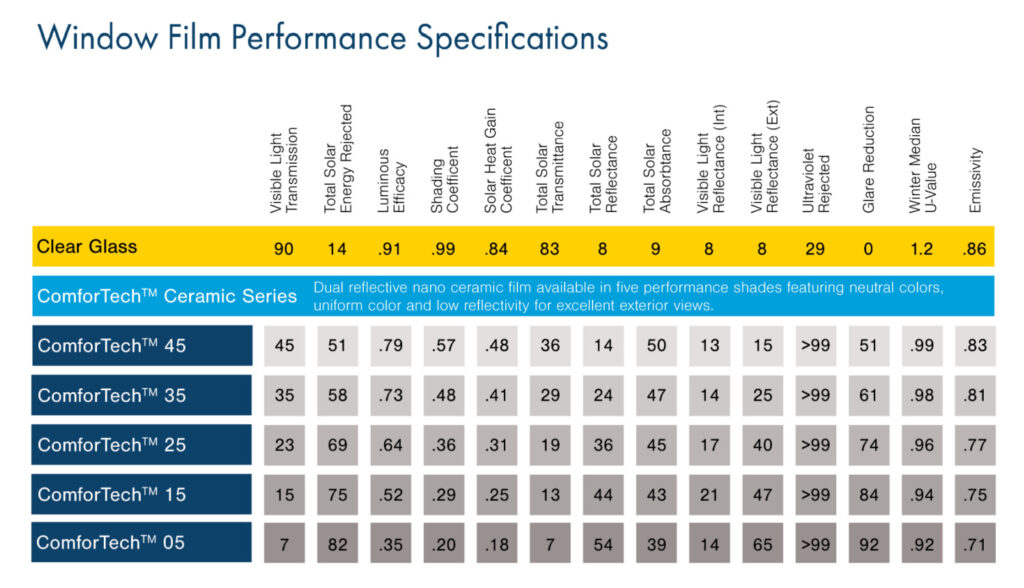
Trusted by Thousands of Homeowners Across the U.S.
Trusted by Thousands of Homeowners Across the U.S.

Have you ever walked into your living room on a sunny afternoon and noticed one corner is unbearably hot while the rest of the house feels fine? These “hot spots” aren’t just uncomfortable—they’re the result of solar heat gain, and they can wreak havoc on your energy bills and your home’s comfort.
Fortunately, there’s a simple, science-backed solution: solar control window film. By addressing the physics of solar heat gain, window film helps you reclaim your comfort, even in rooms that feel like saunas every afternoon.
Let’s break down exactly what solar heat gain is, why it creates hot spots, and how window film solves the problem.
Solar heat gain is the increase in temperature inside your home that results from sunlight passing through windows and being absorbed by your walls, floors, and furnishings.
Here’s how it works:
The result? Rising indoor temperatures, particularly in areas directly exposed to the sun.
Not every part of your house gets equally hot. That’s because several factors influence where solar heat gain is strongest:
This is why your home office may feel perfectly cool in the morning but unbearable by mid-afternoon, or why your upstairs bedroom seems hotter than the rest of the house.
So, how does window film step in to solve the solar heat gain problem?
Window films—especially ceramic solar control films like Concord’s ComforTech™ Ceramic Series—are engineered to filter out the parts of sunlight that cause heat while letting in plenty of natural light.
Here’s the breakdown:
Essentially, window film acts like a filter—selectively letting in what you want (natural light) and blocking what you don’t (excess heat and UV). They achieve this by reflecting some of the energy and absorbing some of the energy:
Now let’s connect the science to what you actually feel in your home.
In short: less sun in, less heat out, and a more comfortable home office, bedroom, or living space.
To be able to compare different window films and brands, you need to know the key metrics window film is measured on.
Window film is rated by the third-party rating agency: the National Fenestration Rating Council. This agency rates both windows AND window films. The main factors measured by the NFRC are Visible Light Transmittance, Solar Heat Gain Coefficient, and the U-Factor of the filmed window unit.
Visible Light Transmittance is just what you would think: the amount of visible light that the filmed glass allows through into the space.
Solar Heat Gain Coefficient (SHGC) is a bit more complicated. The SHGC is the sum of incident solar energy that is transmitted inside through the glazing system. It includes solar energy directly transmitted and the part of absorbed solar energy that is released inwards. SHGC is the fraction of incident solar radiations that actually enters the building through window glass. SHGC is expressed as a number between 0 and 1. The lower a window’s solar heat gain coefficient, the less solar heat it transmits.
You can see the performace specs of our Concord’s ComforTech™ Ceramic Series window film below. You can see that as the film gets darker, the solar control increases. So darker films will naturally reduce more of the solar heat gain in your home:

Imagine a west-facing home office with a large picture window. Without protection, the afternoon sun pours in, raising the temperature in that room by several degrees compared to the rest of the house. Your AC kicks on more often, but the office still feels hot and stuffy.
Now add solar control window film:
Result? The office stays within a degree or two of the rest of the house, your AC doesn’t work overtime, and you can comfortably work at your computer without squinting through glare.
While the main goal is reducing solar heat gain, window film delivers several side perks:
These extra benefits make it a smart all-around home upgrade, not just a comfort fix.
There are many types of window films, but ceramic technology stands out. Unlike older metallic or dyed films, ceramic film is:
Our ComforTech™ Ceramic Series offers a range of shades, so you can choose the level of light transmission that fits your space while still reaping the heat-blocking benefits.
Read more about ceramic window film for your home and check out our video on how our ceramic film is made:
Solar heat gain is a simple scientific process, but it has a big impact on your comfort and energy bills. Those hot spots around your home aren’t just bad luck—they’re the result of sunlight streaming through untreated glass.
By applying solar control window film, you harness advanced ceramic technology to filter out heat-causing infrared rays, reduce glare, and create a more balanced, comfortable living environment.
If you’re tired of battling hot spots in your home, explore Concord Window Film’s ceramic film collection. It’s the easiest DIY upgrade to bring the science of solar control into your home—without sacrificing natural light or style.